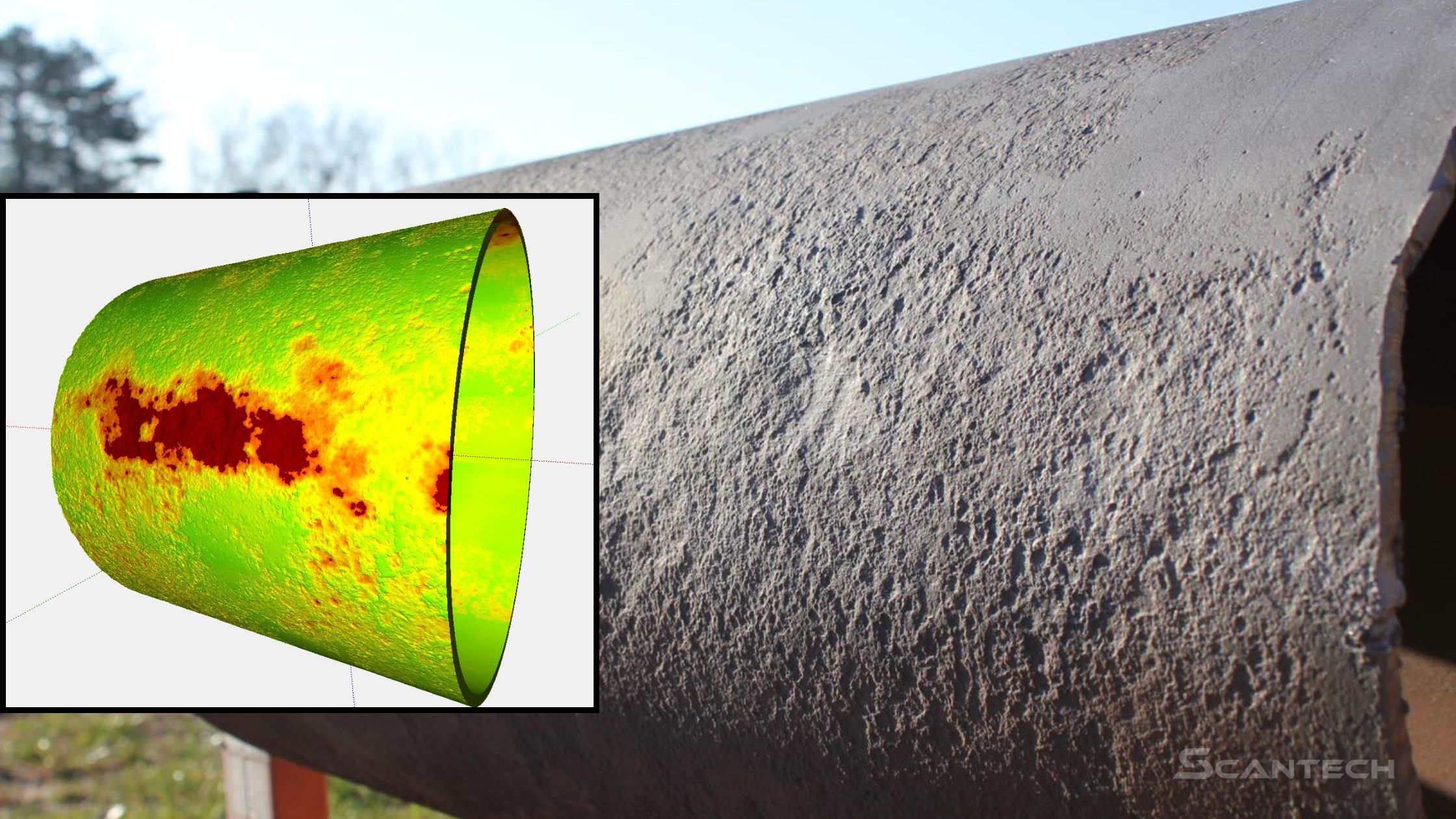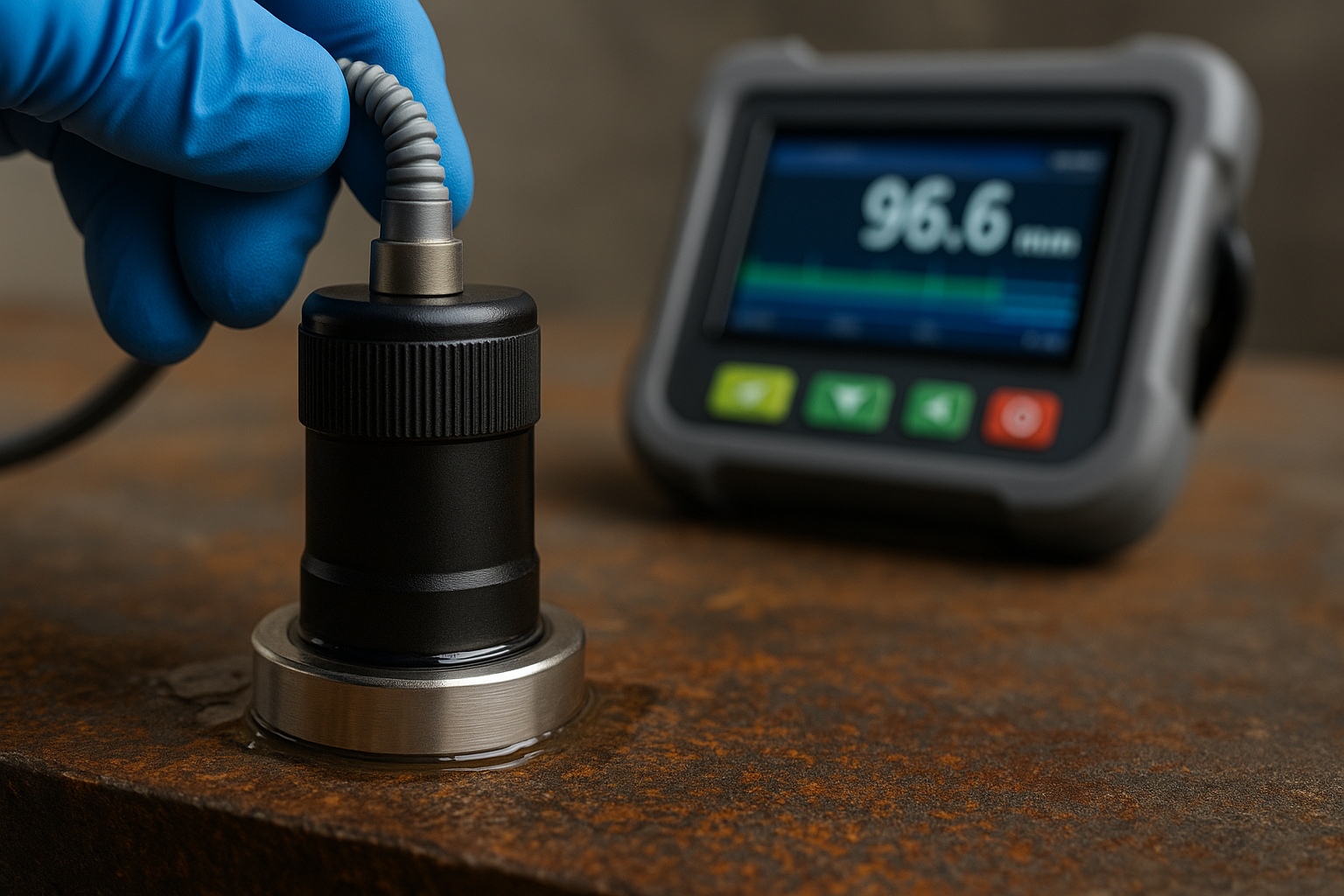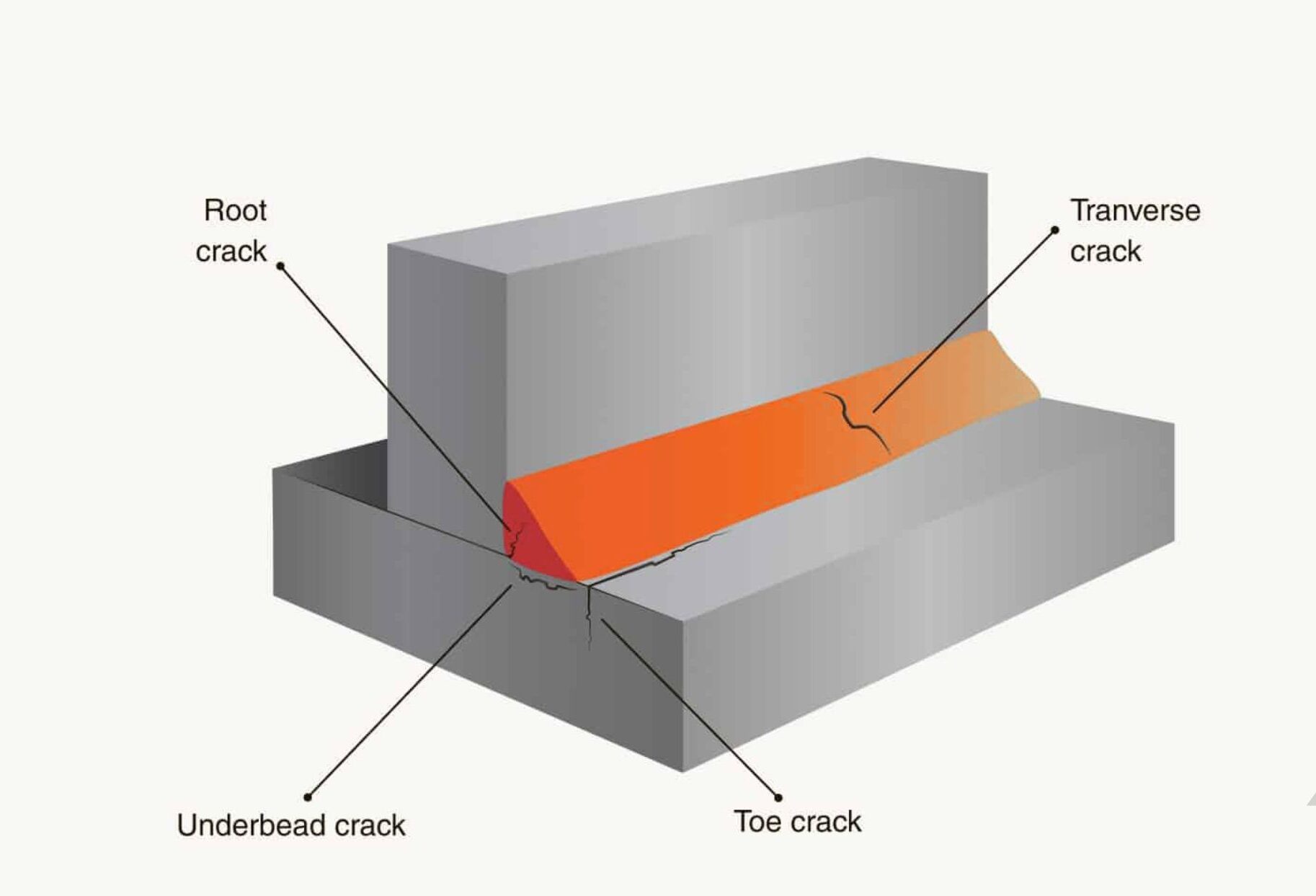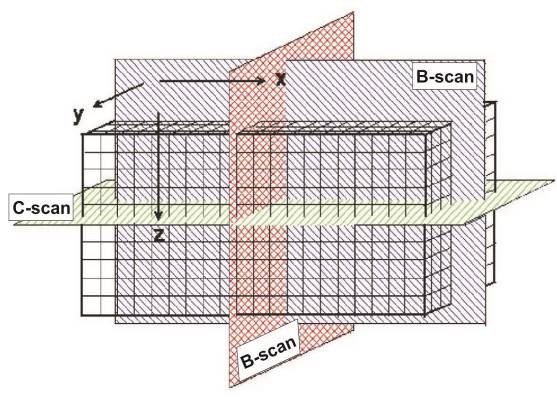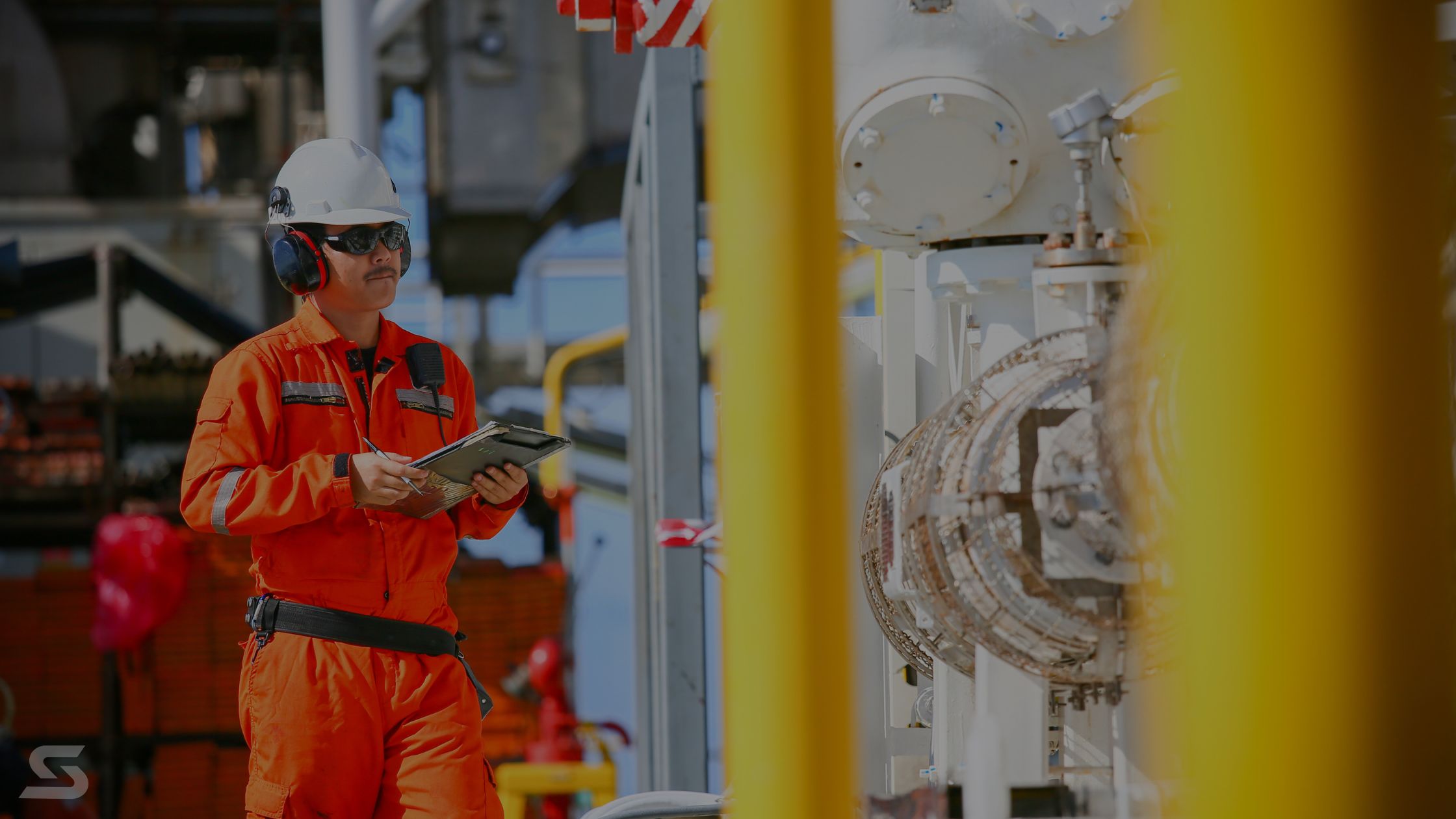Table of Contents
In ultrasonic testing (UT), data quality is non-negotiable. Whether you’re inspecting tank bottoms or monitoring corrosion across a large structure, choosing the right scanner is essential to getting accurate, actionable results.
Two of the most common UT scanning methods—B-scan and C-scan—are often confused or misapplied. But each serves a distinct purpose, and knowing the difference can save time, prevent reporting errors, and ensure compliance with inspection standards like API 653.
What Is a B Scanner?
A B scanner captures a cross-sectional view of the material by moving the ultrasonic probe along a linear path. The resulting image displays variations in thickness and flaw depth along that scan line.
Best For:
- Thickness profiling
- Flaw sizing and mid-wall indication
- API 653 tank bottom inspections
- Welds, pressure vessels, and pipe walls
Why It Matters:
B-scan imaging is essential when the priority is identifying wall thinning, pitting, or other vertical anomalies that affect material integrity over a single axis.
Related Solution: ScanTech’s Axis Scanner and Analyst B-Scan Software are purpose-built for rapid thickness profiling with API 653-compliant reporting capabilities.
What Is a C Scanner?
A C scanner produces a plan view (top-down) image by scanning across both the X and Y axes. It maps ultrasonic responses across a surface, displaying amplitude or time-of-flight data to show corrosion or material degradation across an area.
Best For:
- Full-surface corrosion mapping
- Wide-area condition assessments
- Tank shells, flat panels, and structural components
Why It Matters:
C-scanning is used strictly for corrosion mapping, not for vertical flaw sizing. It excels at identifying distributed material loss across large surface areas—not through-thickness defects.
Related Solution: ScanTech’s Vertex Scanner provides high-resolution area coverage with fast setup and detailed C-scan imagery for long-term asset monitoring.
B Scanner vs. C Scanner: Key Differences
| Feature | B Scanner | C Scanner |
| Scan Pattern | Single line (linear path) | Full surface area (2D map) |
| View | Cross-sectional (slice view) | Top-down (plan view) |
| Primary Use | Thickness profiling, flaw sizing | Corrosion mapping, flaw distribution imaging |
| Best For | Tank floors, pipes, welds | Tank walls, flat plates, structural panels |
| Setup Time | Faster and simpler | More setup required for full mapping |
| Data Detail | Depth changes along a line | Area-based variation and defect visualization |
When to Choose a B Scanner
Use a B scanner if:
- You need to generate cross-sectional thickness data
- You’re inspecting tanks under API 653 standards
- You’re focused on flaw sizing, wall thinning, or localized defects
- You require fast, portable setup in the field
Explore our Automated Tank Inspection Solutions
When to Choose a C Scanner
Use a C scanner if:
- You’re mapping corrosion across large surface areas
- You need a high-resolution plan view of degradation
- The goal is asset monitoring over time—not flaw sizing
- Your inspection involves flat or curved panels, not pipes
Learn more about our Corrosion Mapping Capabilities
ScanTech Systems for Each Method
At ScanTech, we don’t believe in one-size-fits-all. Each of our systems is designed for specific scanning methods and real-world application demands:
- Axis Scanner + Batt Pack – Ideal for B-scan inspections on tank bottoms, vessels, and welds
- Vertex or XR Spider – Optimized for high-resolution C-scan corrosion mapping
- Analyst Software – Built-in API 653 algorithms, real-time data, and fast report generation for inspectors in the field
Conclusion: Use the Right Scanner for the Right Job
B scanners and C scanners are not interchangeable—they’re engineered for different tasks. If you’re inspecting tank floors, welds, or any asset under API 653, you need a B scanner. If you’re mapping large surfaces for widespread corrosion, the C scanner is the right tool.
Choosing the correct scanner ensures better data, faster inspections, and more accurate reports. Still not sure what fits your application?
Talk to a ScanTech expert for help building the right system for your inspections.
FAQ's
No. API 653 requires thickness data typically collected via B-scanning, not surface-level imaging.
Far far away, behind the word mountains, far from the countries Vokalia and Consonantia, there live the blind texts. Separated they live in Bookmarksgrove right at the coast
A B scanner like the Axis is ideal for quick inspections in confined spaces due to its streamlined setup and encoded scanning path.

